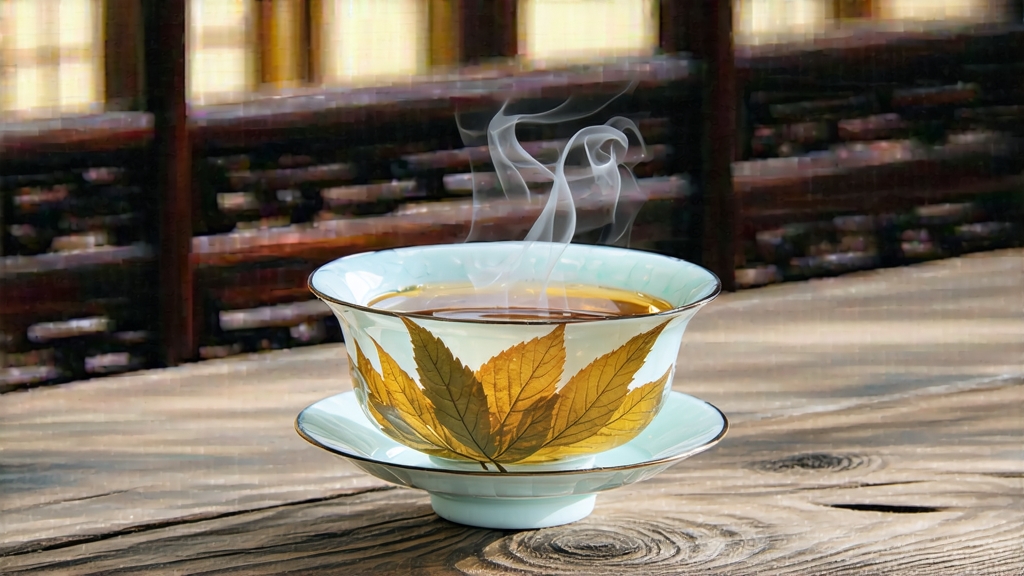
Shou Mei—literally “Longevity Eyebrow”—owes its poetic name to the slender, gently curved leaves that resemble the silver brows of sages. While Western cafés often celebrate Silver Needle and White Peony, this humbler grade remains the quiet custodian of everyday wisdom in Fujian’s mountain villages. International drinkers seeking both value and depth are discovering that Shou Mei offers the most candid transcript of white tea’s soul: unhurried, unpretentious, and astonishingly articulate about time and place.
Historical whispers place Shou Mei’s emergence during the late Ming dynasty, when tea masters began sorting the larger, later-picked leaves that escaped the tribute-grade Silver Needle cut. Rather than discarding them, farmers in Fuding and Zhenghe laid the leaves in wicker baskets and left them to the mountain breeze. The accidental overnight withering produced a liquor darker than expected, tasting of dried apricot, hay, and a faint cooling sweetness that lingered like temple incense. Word spread that these “eyebrow” leaves aged with grace, turning from jade green to umber, then to deep mahogany over decades. By the Qing, merchants along the Min River were trading compressed cakes of Shou Mei as a digestive tonic for scholars who indulged in too much river fish and rice wine.
Today Shou Mei is still harvested after the spring equinox, when the tea bush has fully awakened and the leaves have stretched to their broadest, most relaxed silhouette. Pickers take one bud plus three or four leaves, a gesture that looks almost casual compared with the reverent pluck of Silver Needle. Yet this seeming negligence is the first act of a slow alchemical drama. The leaves are spread no thicker than a finger’s width on bamboo trays set under shade cloth; here they will lie for thirty-six to forty-eight hours, depending on humidity and the phase of the moon—older farmers insist that waning moons draw moisture outward more gently. No firing, no rolling, no shaking: only the whisper of air and the occasional turn of a wrist. Oxidation proceeds in slow motion, halted while still below five percent, preserving the tea’s pale chromatics and enzymatic vitality.
The final step is a soft bake, hardly hotter than a baker’s proofing drawer, just enough to coax the residual moisture down to seven percent without sealing the leaf’s pores. Done correctly, the finished tea feels feather-light yet springs back when squeezed, releasing a fragrance that mingles sweet potato vine and distant pine. In Fuding, some producers compress the loose leaves into 350-gram cakes using stone molds carved during the Guangxu era. The cakes are then stacked in attics where summer heat drifts through tiled roofs, initiating the microbial choreography that will darken the leaf and deepen the cup over years, even decades.
Western drinkers often ask how Shou Mei differs from its aristocratic cousins. Imagine a spectrum of transparency: Silver Needle is a crystal prism, White Peony is morning dew on grass, while Shou Mei is late-afternoon sunlight filtered through wheat stalks—warmer, earthier, more forgiving. The larger leaf area means a higher ratio of chlorophyll and polysaccharides, translating into a rounder body and a natural honeyed note that requires no added sweetener. Caffeine levels hover around two percent, gentle enough for evening yet sufficient to lift the mind out of post-prandial fog.
To brew Shou Mei with the respect it deserves, begin with neutral water—TDS between 30 and 80 ppm—heated to 85 °C. A 120-ml porcelain gaiwan allows the leaves to tumble freely; use five grams for a session that will stretch across five infusions. The first pour, merely twenty seconds, awakens the leaf and rinses away attic dust. Decant fully, then lengthen each subsequent steep by ten seconds. Watch the liquor turn from pale chrysanthemum to burnished topaz; inhale the aroma cup and you may catch whispers of persimmon, cedar bark, and the nostalgic scent of old book pages. On the palate, Shou Mei begins with a soft, almost milky texture, expands into notes of dried fig and saffron, then finishes with a cool mentholated breath at the back of the throat—a sensation Chinese drinkers call “sheng jin,” the generating of precious fluids.
Aged Shou Mei demands a slightly different choreography.